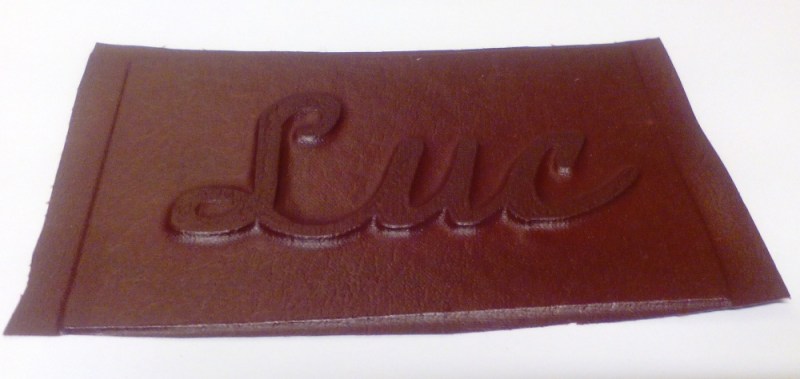How exactly do you use 3D printing to assist in the extremely tedious and difficult art of leather book binding? It’s pretty simple actually — by 3D printing the title you want to emboss!
[Luc Volders] is a hobbyist book binder. He’s also recently gotten into 3D printing, by building his own Prusa I2, and even now, he’s working on building a Delta printer. Typically to do a relief or embossed title on a leather-bound book requires a lot of time — and it’s pretty easy to mess up.
He’s done book covers with relief before, by painstakingly carving each letter out with a knife, then gluing leather onto the cover, pressing it into the indent left by carving. It’s not easy.
Then he had an idea on how to do an embossed cover. 3D print your title, glue it on, and add a leather skin. This technique could also be used with a laser cutter (which would be quite a bit faster) and could allow you to do relief based covers as well — simply use the laser cutter to cut out the lettering instead!
Curious about the actual binding process? We’ve got you covered.
Do you have a trick or tip on using 3D printers, laser cutters, or even CNC routers to help you with a difficult task? We’d love to hear about it — send in your tips to the tip line!

















That’s a nice result and he should be able to do multiple letter heights without extra work as well.
“we’ve got you covered”
Oh, I missed these puns :)
I’d say 3d printed would be more versatile than laser cutting, as he can play with heights, how sharp the borders are … although it’s true that i’d take longer than a laser cutter.
Uhm… what about a wood carving (cnc) machine?
A CNC router would be perfect for this sort of work. Honestly, and I say this as someone who’s 3D printer was running for 14 hours yesterday, a CNC router is probably more useful for most folk than a 3D printer. If I had to choose between a $5k CNC router in the shop or a $2.5K 3D printer, I’d go with the CNC router. The feedstock for a CNC router is inexpensive and remains stable during the process (ie. it isn’t heated and cooled). This means a CNC router can be used on pieces that are at a human scale (ie. furniture).
I had the pleasure of replacing the electronics on an old 25″x25″ CNC router in a local woodworking shop. With the new electronics in place, the first piece we cut was a 24″ diameter table-saw blade (out of wood). Holding the finished piece in my hands was an “Aha!” moment.
Ever worked with a lasercutter? I got all 3 at the office, and the laser is my favorite. It’s the quickest to produce anything, and no mess, unlike the CNC routers.
Jimmy Diresta is working on doing just that!
https://www.youtube.com/watch?v=ZbNkRooG4Ic
Depending on the settings used, you can actually achieve a good bit of depth in certain materials with some laser cutters.
http://36.media.tumblr.com/tumblr_m5aiv24paE1qfd4ilo1_1280.png
Same laser cut file, just using different laser “power” intensities.
Hi there,
Concerning your comments. It is indeed easy to make the fonts in different heights. And you can use pictures too like I stated in my story. I have downloaded several nice borders (found with google) and printed them and indeed used them to emboss book covers.
Next to that it is indeed possible to mame heights and depts this way.
And a succeding step is to make stamps using this technique. I am already checking into this and using oogoo as the stamp material.
Just use your imagination.
Luc